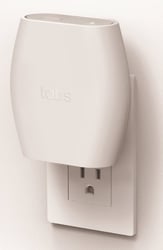
The Key Advantage of LoRaWAN®
06 January 2020 / by Hardy Schmidbauer
There are a number of differentiators for LoRa® devices and the LoRaWAN® protocol that have helped in its widespread adoption, including long range connectivity, battery lifetime, security, network architecture, and network capacity. However, there is one particular feature that will drive LoRaWAN adoption for years to come. Technical challenges or limitations (range, capacity, battery lifetime, etc.) are no longer a barrier to Internet of Things (IoT) adoption. The remaining challenges of the IoT are system integration, digital transformation, return-on-investment (ROI), service level agreements (SLA), and ensuring interoperability across an ecosystem.
The key feature that will drive continued scale and adoption of LoRaWAN through these challenges is deployment model flexibility, enabled by the availability of low-cost gateways. Specifically, deployment model flexibility ensures IoT solutions have a cost that is optimized for ROI, and for performance that can achieve a specific SLA.
Most cellular and industrial networking solutions are deployed using a tower or elevated-point deployment model. The higher a base station or gateway is when it is deployed, the more network coverage it generates. When hardware infrastructure is expensive, the total network cost can be optimized by securing higher towers or elevated points. LoRaWAN can also be deployed under the same model and may use outdoor gateways on towers or elevated points.
For some applications though, broad network coverage from a tower is not necessary. In addition, guaranteeing deep indoor coverage – regardless of technology – is challenging when trying to achieve such coverage from a tower (outside-in). Examples of this type of use case include smart building applications that need to guarantee coverage with an SLA in a basement, parking garage or walk-in-freezer. With LoRaWAN, the same hardware deployed on towers is also available as low-cost indoor gateways.

Achieving and guaranteeing network coverage from a few low-cost indoor gateways, or generating coverage from the inside-out for a smart building application, is more controllable and cost effective than trying to secure an expensive outdoor tower or elevated point. The option of low-cost indoor gateways with the same functionality of outdoor gateways is not available in most other LPWAN or proprietary wireless networking solutions.
While indoor gateways are advantageous for some applications, the main attraction of LoRaWAN is the choice of, and options for, gateway types and deployment models. This allows solution providers to tailor the solution to the requirements of the application, environment or use-case.
LoRaWAN Deployment Model Options
The image below shows some of the deployment model options used with LoRaWAN-based solutions.

Let’s take a closer look.
- Outdoor gateway deployment: This is the option of deploying outdoors on towers or elevated points. Recently, there has been much talk in the news about deploying LoRaWAN using satellites or aerostat balloons in addition to the traditional tower model.
- Public networks: Many telecom and mobile operators have used an outdoor deployment strategy (on their existing tower infrastructure) to deploy and offer LPWAN connectivity as a public network, as is done with 3G and 4G technology.
- Private networks: Some enterprises prefer that a third party manage and provide an SLA for their network and connectivity requirements. Others prefer to control their own destiny. Both public and private options are available within the ecosystem.
- Indoor gateway deployment: Many vendors have already integrated LoRaWAN-based gateways into set-top boxes, home hubs and Wi-Fi routers. Also available are standalone gateways with various backhaul options, such as Wi-Fi, POE or cellular.
- Roaming: Once coverage is generated by an enterprise or a network operator, the existing coverage can extend to other applications through roaming. For example, if a large retailer installs a network across all their locations, other solution providers might consider leveraging that existing coverage by including additional applications to increase the ROI of the deployment; for example, a logistics partner or the local landscape management company.
- Hybrid: Light outdoor network coverage combined with low-cost indoor gateways can generate network coverage with a hybrid approach. This approach provides optimal coverage at the lowest cost with the highest performance for capacity, redundancy and battery lifetime. It also allows the convergence of consumer, commercial and enterprise solutions, assuming a workable SLA model across these industries.
In summary, low-cost gateways are unique to LoRaWAN and the option to combine with outdoor gateways using different deployment models allows significant optimization of IoT solutions for cost, ROI and performance to achieve a specific SLA.
One low-cost gateway option is the Corecell Reference Design for gateway applications based on SX1302 and SX1250.
For more information on Semtech’s gateway products, see www.semtech.com/sales.
LoRa® is a registered trademark or service mark of Semtech Corporation or its affiliates.
